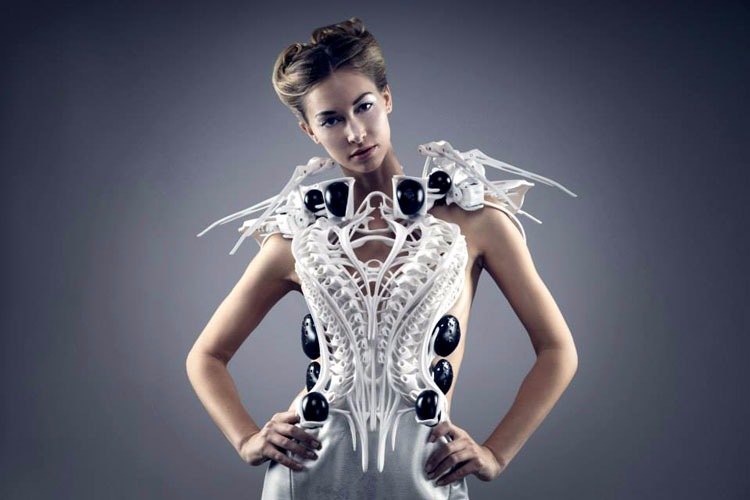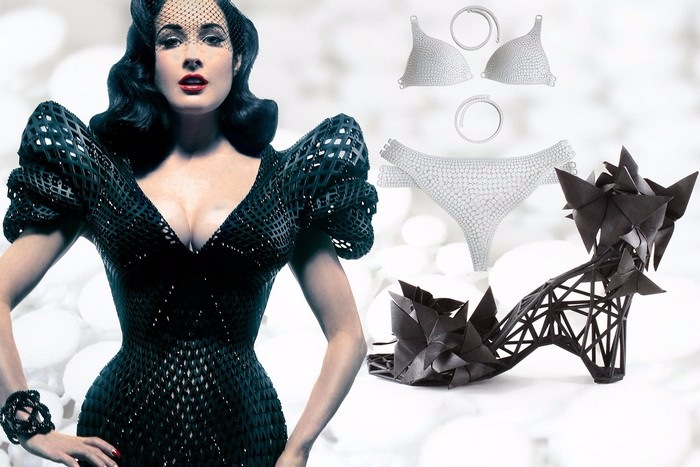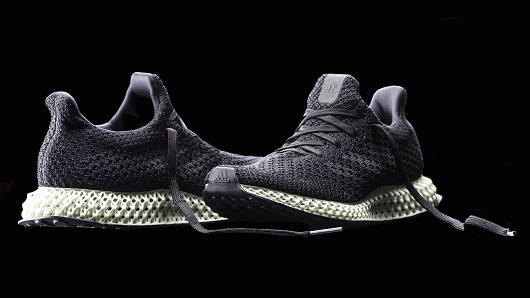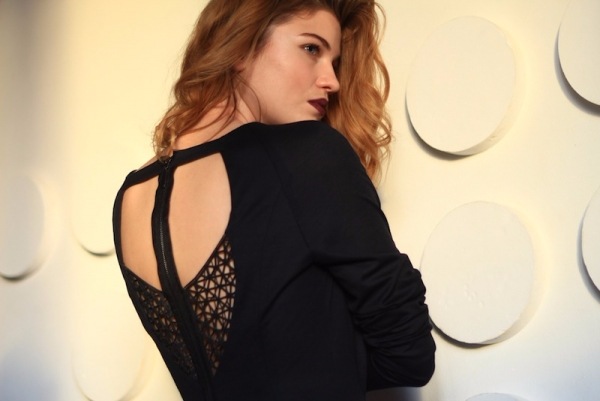
Additive technologies are actively storming the world of high fashion: 3D-printed clothing, shoes and accessories are increasingly appearing on the catwalks. If earlier these were rare collections, today almost every eminent designer tries to incorporate at least a small 3D printed part into their products.
How long has the direction of 3D-fashion? Will things created on a 3D printer, the trend of everyday bow? What designers are experimenting with 3D printing in Russia?
The answers to these questions are further in the article.
A brief history of the development of the direction of 3D-fashionThe direction of 3D-fashion loudly declared itself in 2011. It was then that the designers succeeded in creating the original 3D-printed footwear, and at the Paris Fashion Week Iris van Herpen presented a collection of spring-summer dresses printed on a 3D printer. It was a success. Everyone started talking about a new technology that will turn the world of fashion.
But a special coup did not happen. At that time, 3D printing was an expensive technology, so only a few could experiment. And they experimented. And how! In 2013, in addition to collections with 3D-printed models, two interesting projects were implemented. Americans Michael Schmidt and Francis Bitonti
printed a dress for the burlesque diva Dita Von Teese. A designer from China, Xie Wei Lunom,
created an outrageous outfit for Lady Gaga. Dresses were frank and uncomfortable, but spectacular. Wow effect achieved.

The well-known shoe brands also paid attention to the new technology. In 2013, NIKE used 3D printing to
create a unique model of the Vapor Laser Talon Cleat with virtually weightless soles. The brand later created the Zoom Superfly Flyknit sneakers, in which athlete Allison Felix won a gold medal at the Olympics in Rio de Janeiro. The company refused from the mass production of shoes with 3D printed soles. Initiated by intercepted adidas.

As additive technologies became more accessible, not only well-known designers, but also small studios began to use them. In 2014, the Massachusetts-based company Nervous System
created flexible jewelry on a 3D printer. They consisted of thousands of original fragments connected by hinges. Later, in 2016, the studio struck the fashion-community with a scarlet kinematic dress of scales. It perfectly fit the body and effectively responded to the movements of the model.
What now?Few people believed that 3D printing would leave the podium stage and reach the masses. However, it happened. We describe only a few 3D-fashion-projects implemented over the past six months.
Famous New York designer Alexis Walsh creates unique handmade clothes, decorating it with the help of 3D printed elements. She is one of the few who specifically studied 3D-fashion-design. Collaborated with Proenza Schouler and Lululemon Athletica Lab NYC. Her unique collections caused a sensation in New York, Paris, London, Berlin. Everything goes to the fact that soon such clothes will become a trend.

By the way, the designer will soon visit Moscow and
hold a Fashion show of her creations.
Also,
a fully-printed bomber jacket from the designer from Tel Aviv, Danit Peleg,
appeared in the online sale. It can be ordered remotely by fitting the dimensions in a virtual fitting room. The designer plans to expand the list of the proposed 3D-printed clothing.
Famous clothing manufacturers became interested in the
Loom dress , which was printed by the young designer from the USA, Maria Alejandra Mora-Sanchez. It combines textiles and additive technologies, and its main feature is the ability to stretch, adapting to body movements.

At the beginning of the summer, aRks studio from Palermo
presented the Coral 3D printed bikini collection. The swimsuits turned out to be quite frank, but they are worthy of attention, as they correspond to the qualities of ergonomics, environmental friendliness and were created exactly according to the figure of a particular model. Products are quite thin, which provides maximum comfort, and cotton liners allow you to wear a bikini as underwear.
Adidas
launched a massive 3D print footwear release. While the party is small - the circulation of the Futurecraft 4D model will be just over 100 thousand pairs. It is important that the use of additive technologies allowed the company to speed up and cheapen the process of creating a 3D printed sole, while it has become more durable and flexible. In the future, adidas wants to launch an online shoe ordering service for individual parameters.

Also during the fashion week in Portland, a collection of 3D printed shoes
will be shown . The collection was created by local designer Seth Aaron and a start-up Feetz, making custom-made shoes on a 3D printer. Interestingly, the models are printed from materials that are fully recyclable. After the show, visitors will be able to scan their feet and order innovative shoes for themselves. It will be made and sent within a few weeks.
How is the 3D-fashion-industry developing in Russia?The first to use 3D printing in fashion industry in Russia was designer Snezhana Paderina. In 2014, she implemented a fashion project for creating clothes with 3D-printed elements. Today, the designer's fashion collections are regularly shown on the catwalks of New York. Her shows were held at the Metropolitan Museum at the exhibition “Fashion in the era of technology”, at the IoT Media Mash conference, at the fashion event of the Identities Fashion Show, etc. She is still experimenting with 3D printing, creating unique evening and everyday outfits. In October, residents of the capital will also have the opportunity to see the work with their
own eyes .

Not so long ago, domestic start-up
Try.Fit proposed a revolutionary technology for virtual fitting of shoes. The essence of development - the user scans his foot and uploads data to the network, where a special program compares a 3D scan of the foot with a shoe of a specific pair of shoes. Such brands as NIKE and New Balance are already interested in technology, as this will help them to significantly increase the percentage of online sales. In Russia, the company is already cooperating with adidas and Econika.
In addition, there are many 3D printing platforms in the country today that offer to create customized accessories or any other products to order. Among them -
3DPrintus . One of the activities of the company - the manufacture of 3D-printed jewelry.
According to 3DPrintus co-founder Konstantin Ivanov, in Russia additive technologies are used mainly at the stage of designing clothes or shoes, as well as for creating unique accessories, jewelry and small decorative elements. Also, 3D printing helps designers to quickly find new forms and implement bold ideas. On the mass production it is not yet.
However, there are optimists. For example, the head of the National Chamber of Fashion, Alexander Shumsky,
declares : “Now the clothing market in the world is transforming and reaching a new level, and“ Russia has a chance to integrate into this process, ”said Shumsky. Promising segments in this market can be “smart” clothing, which is embedded gadgets, personalized product creation or sale of virtual design, which the consumer can use for 3D printing. Now, according to the concept, the volume of the global technological fashion market is about $ 100 billion, by 2020 it will be $ 300 billion, and in 2035 it will grow to $ 2.8 trillion.
It is possible that soon the production process of clothes and shoes will consist of modeling the product in the editor, 3D printing of the created model and immediate online sales with streamlined delivery. Well then. Let's wait and see.